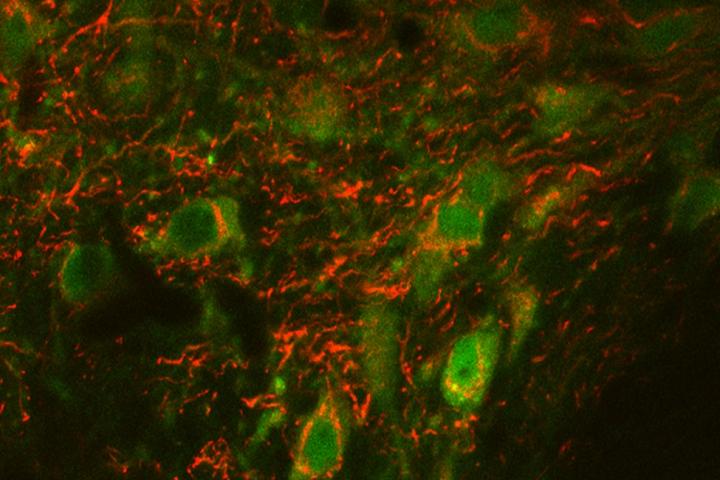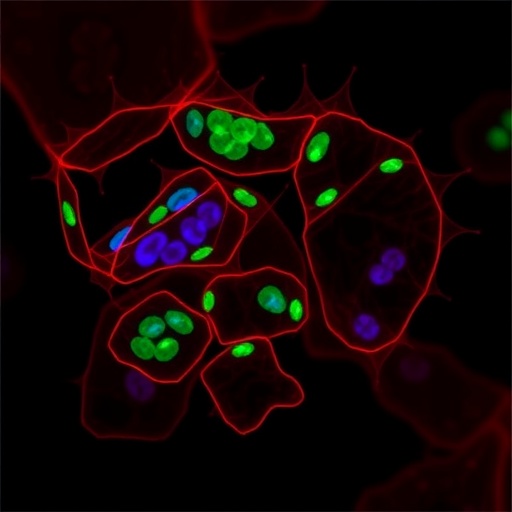
Credit: Florida Atlantic University’s Brain Institute
Cocaine is a highly addictive psychostimulant that induces complex molecular, cellular and behavioral responses. Despite various approaches and years of pre-clinical studies, effective, mechanism-based therapies to assist with cocaine misuse and dependence are still sorely lacking. Although it is well understood that elevations of the brain chemical dopamine play a critical role in cocaine’s ability to produce a “high” – feelings that trigger the spiral into addiction – the actions of cocaine are far more complex.
Dopamine signaling dysfunction also is believed to contribute to multiple neuropsychiatric disorders including attention-deficit/hyperactivity disorder (ADHD). Although significant evidence exists of disrupted dopamine signaling in these disorders, the mechanisms by which these changes arise, and the impact that these insults have on synaptic and circuit plasticities, remain an active area of investigation. Importantly, individuals with ADHD who have not received treatment are at an increased risk for substance use disorder.
Using a unique strain of genetically engineered mice, a team of neuroscientists at Florida Atlantic University’s Brain Institute and collaborators at Vanderbilt University and the Research Triangle Institute, Research Triangle Park, have discovered a surprising response to cocaine in these mice.
Results from the study, published in the journal Neuropsychopharmacology, show that mutant mice failed to exhibit the hyperactivity seen in normal mice when given cocaine and didn’t run around. However, in other tests, these mice still found cocaine appealing, although they displayed an inability to shake the memory of cocaine’s actions when the drug was no longer administered. Through a combination of genetic, biochemical and behavioral studies, the researchers found that the critical change that blocks cocaine’s stimulant effects in the DATVal559 mice involves the mood molecule serotonin and not dopamine.
The study was spearheaded by Randy D. Blakely, Ph.D., lead author, executive director of FAU’s Brain Institute, and a professor of biomedical science in FAU’s Schmidt College of Medicine.
Several years ago, Blakely and his team generated DAT Val559 mice, named for their expression of a rare human genetic variant (Val559) that alters the function of the dopamine transporter (DAT). DAT proteins are responsible for limiting the signaling of dopamine in the brain by sweeping the neurotransmitter away from synapses.
Blakely initially identified the DAT Val559 mutation in subjects with ADHD. Others found the genetic variant in subjects with autism and bipolar disorder. The gene variant also has been found in apparently normal subjects, suggesting a complex mode of action.
“It was extremely odd to see a mouse given cocaine not to become hyperactive, and it suggested to us that an unexpected change had occurred in the brain in response to the mutation, a change that might be worth identifying,” said Blakely. “Adding more to the puzzle, we found that the DAT Val559 mice responded with a hyperactive response to other psychostimulants such as amphetamine or methylphenidate like Ritalin™.”
Cocaine, unlike amphetamine and methylphenidate, exhibits a potent interaction with the serotonin (5-HT) transporter (SERT), a sister protein of DAT. SERT sweeps away serotonin at synapses just like DAT does for dopamine. Blakely’s team believes that during brain development the altered dopamine signaling arising in the DATVal559 mice triggered a change in the strength of serotonin actions, specifically in brain circuits that impact the activation of movement and the ability to shake off drug memories. When the researchers limited serotonin’s actions with a serotonin blocker, the mice regained a normal hyperactive response to cocaine.
“We previously found increased reward motivation in the DAT Val559 mice, and attributed these responses to changes in dopamine for obvious reasons,” said Adele Stewart, Ph.D., first author of the study and a post-doc in Blakely’s lab. “Our studies with cocaine, however, revealed something more interesting – basically that developmental changes in dopamine handling lead to remarkably powerful changes in the brain’s use of serotonin. This makes us wonder if children developing with excessive dopamine signaling might benefit from medications that target serotonin neurons and their synapses.”
According to Florida’s Medical Examiner Commission, overdose deaths from cocaine are at their highest level in the state since 2007. From 2012 to 2015, cocaine deaths in Florida increased from 1,318 fatalities to 1,834 fatalities. Only fentanyl, a powerful synthetic painkiller, surpassed deaths from cocaine overdose in Florida.
Nationally, more than 1 in 3 drug misuse or abuse-related emergency department visits (40 percent) involved cocaine.
“Although we were initially focused on the significance of our work in relation to ADHD, we think that there may be some very important lessons here that could help those dealing with substance use disorder,” said Blakely.
###
Study co-authors of “Disrupted Serotonin/Dopamine Crosstalk in DAT Val559 Mice,” are Gwynne L. Davis, Ph.D.; Paul J. Gresch, Ph.D.; Rania M. Katamish; Rodeania Peart; Maximillian J. Rabil; Raajaram Gowrishankar, Ph.D.; F. Ivy Carroll, Ph.D.; and Maureen K. Hahn, Ph.D.
This research is funded by grants from the Elaine Sanders-Bush Scholar’s Award from the Vanderbilt Silvio O. Conte Center for Neuroscience Research and the Vanderbilt International Scholars Program awarded to Davis and an NIH grant (MH086530) awarded to Blakely.
About the FAU Brain Institute:
Inaugurated in 2016 on the John D. MacArthur Campus in Jupiter, Fla., the FAU Brain Institute, supports research, education and community outreach among more than 100 faculty level researchers at FAU and its affiliate research centers. One of FAU’s four pillars that guide the University’s goals and strategic actions, the Institute seeks to unlock the secrets of brain development, function and plasticity and how the mechanisms uncovered can be compromised to drive devastating brain disorders. From the study of neuronal development and signaling to investigations of brain diseases including addiction, autism, Parkinson’s and Alzheimer’s disease, researchers from FAU’s Brain Institute seek to generate knowledge that benefits society. For more information about the Institute and its members, visit http://www.
About Florida Atlantic University:
Florida Atlantic University, established in 1961, officially opened its doors in 1964 as the fifth public university in Florida. Today, the University, with an annual economic impact of $6.3 billion, serves more than 30,000 undergraduate and graduate students at sites throughout its six-county service region in southeast Florida. FAU’s world-class teaching and research faculty serves students through 10 colleges: the Dorothy F. Schmidt College of Arts and Letters, the College of Business, the College for Design and Social Inquiry, the College of Education, the College of Engineering and Computer Science, the Graduate College, the Harriet L. Wilkes Honors College, the Charles E. Schmidt College of Medicine, the Christine E. Lynn College of Nursing and the Charles E. Schmidt College of Science. FAU is ranked as a High Research Activity institution by the Carnegie Foundation for the Advancement of Teaching. The University is placing special focus on the rapid development of critical areas that form the basis of its strategic plan: Healthy aging, biotech, coastal and marine issues, neuroscience, regenerative medicine, informatics, lifespan and the environment. These areas provide opportunities for faculty and students to build upon FAU’s existing strengths in research and scholarship. For more information, visit fau.edu.
Media Contact
Gisele Galoustian
[email protected]
561-297-2676
Related Journal Article
http://dx.




